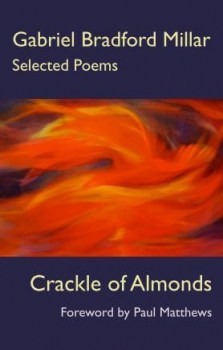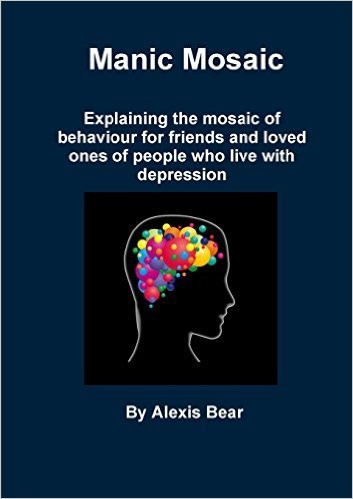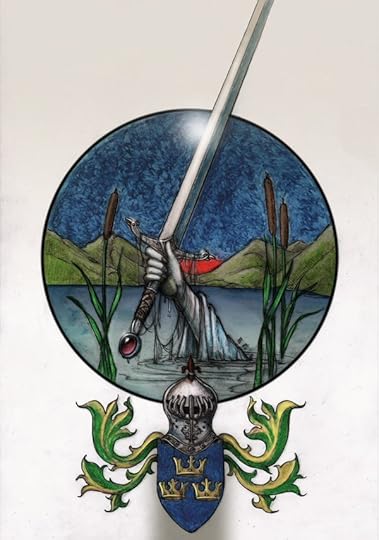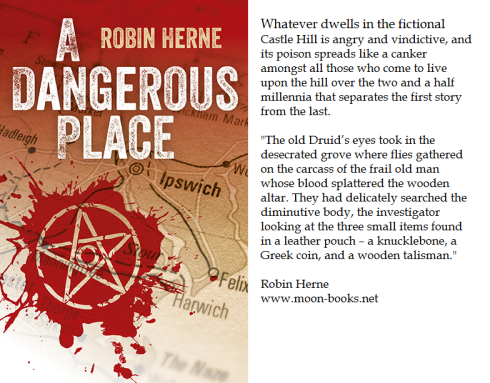Nimue Brown's Blog, page 314
August 6, 2016
Matters of inequality
We aren’t equal, as people, nor can we be. Differences of physical ability, and temperament means that in the most equitable situations imaginable, we would not all be equals. Of course in an ideal world, inequality would only be about skill, creativity, desire for achievement and inclinations around what we prioritise. At the moment we like, as a society, to tell ourselves that it is brains and talent that gets you places, but this isn’t true – it’s the money and resources in your family. The best shot you have at becoming a millionaire, is to be born into a family of millionaires.
Affluence buys opportunities. It buys more time with good teachers. It buys physical resources to help achieve, it buys access to facilities. The best instruments, and opportunities to hear the best musicians playing. The best sports gear. Granted, money cannot make you clever, or a good problem solver, or creative, but what it will give you are the opportunities to develop.
This is where the myth of talent comes in. Natural ability is only ever a small part of what makes for success. Willingness to work, and the resources you have access to are also factors. It’s easier to get through the first few years of doing illustration for little or nothing while you get a foot in the industry door, if someone else can pay your bills. It’s easier to have a sporting career as a young person if someone else has the time and money to take you to events around the country, or around the world. The more we focus on the myth of talent in all fields, the less attention we pay to the power of privilege.
There are of course people who come out of no-where and by dint of sheer ability and determination, make it. They are the exceptions – luck often plays a big part. There are many people who become high achievers, not because they have any great inner resources, but because money has smoothed a path for them. Most of us are capable of far more than we are ever getting opportunity to do. How many great pieces of music will never be written, how many scientific breakthroughs won’t happen, how many brilliant bits of technology won’t be made, how many books not written, art not crafted simply because the person who could have done it was never given the opportunity to develop?
Now imagine what would happen if we had equality of opportunity. If we used technology to do away with tedious jobs, and created a culture in which anyone could seek to excel in any field. Jobs are on the way out as it is, and we don’t seem to have a good vision of the future. We could, if we innovate rather than being led by the preferences of the people with the money, come up with a whole new way of being communities of humans.


August 5, 2016
Robin Herne
I first started reading Robin Herne’s work along time a go in Pagan Dawn magazine. I’ve got all his books, and I think he’s brilliant. Robin is a very knowledgeable Druid, with a lot of historical insights. He’s also a fantastic story teller, running an annual Pookas Pageant that tells stories with a polytheistic flavour to raise money for good causes.
What Robin isn’t, is a self-publicist. He’s always doing exciting things, but he doesn’t pour much effort into telling people how fabulous he is. This is part of what makes him fabulous, of course, but it also means he’s nothing like as a famous or as well read as he deserves to be. Sadly in the Pagan community we are too often persuaded to take most interest in the people who are best at pushing themselves forwards, often at the expense of really interesting folk who have no inclination or ability when it comes to blowing their own trumpets. The only way to fix this, is to spend more time cheering and supporting people we like, regardless of how famous they currently are… So, please do have a look at Robin’s work, he’s a wise and thoughtful chap, and the odds are if you like this blog, you’ll love what he does.
So, this is his author page where you can find out about his books. http://www.moon-books.net/authors/robin-herne
This is his blog. http://roundtheherne.blogspot.co.uk/
This is his youtube channel, where there are stories, poems and all manner of good things. https://www.youtube.com/channel/UCKH9OWBaRxw2tL76vvqWYqA


August 4, 2016
The Poet’s Journey
You sit all night upon a mountain top
To become either mad, or a poet,
But return to daily life much the same,
Hungry, and confused, but trying to speak
Of the night and the mountain and your soul.
You steadfastly research crazy mountains
A place for blows or visions is required,
A place of mystical transformation.
You sit all night on a new mountain top,
Come back speaking of the star jewelled sky,
Space between galaxies, eternity,
But the words are always inadequate.
You flirt with cliché and depression
In rhyming couplets you learn to despise.
Neither a poet, nor properly mad,
All you can do is keep climbing mountains,
And come back without the words to explain,
To people who have never mountain sat,
Whose eyes glaze over at your description.
You seek the company of poets,
Of lunatics bent on chasing the moon,
Deranged idealists and small children
Who want to hear all about your journey,
And for all your relentless sanity
Declare you to be one of their odd tribe.
Each night you all sit on mountain tops
Dreaming the way to distant pinnacles
Until your returning empty handed
Becomes a different kind of meaning.


August 3, 2016
The American in the stream
When I’m tired, I hallucinate. As a consequence, I am wary of my own visual perceptions sometimes. So, there I was, shattered and not of good head, standing where a stream comes down to meet a path. I could see movement in the stream, and as I watched it looked increasingly like a little bundle of leaves was making a conscious descent down the tiny waterfalls. “Ah,” says I to myself. “Hallucinating, then.”
As it was weird and wonderful, I kept watching, as the leaves worked their way down. When they landed in the lowest pool, they stayed together, and I could see them that bit better. Not leaves, but legs, pincers… something weirdly like a lobster. A small light came on inside my head and I realised I was looking at an American crayfish. I’d never seen one before, but know they are around as an invasive species.
It’s very hard to make sense of things we don’t know about. We tie our observations to the familiar. My son, aged about three, finding a lizard in the garden and knowing nothing about lizards, was convinced he’d found a dragon. I recall a tale of confused people finding a monkey and thinking it was a Frenchman. We aren’t good at processing what’s alien to us. We are predisposed to thinking we’ve seen something familiar. The implications of not seeing what we don’t know about are vast. I saw leaves. It took a real effort to realise I wasn’t seeing leaves.


August 2, 2016
Adventures in reading
 Gabriel Bradford Millar, Crackle of Almonds (selected poems) published by Awen.
Gabriel Bradford Millar, Crackle of Almonds (selected poems) published by Awen.
This is a collection that spans a long poetic life – the first poem dates from 1958, the last one in the book came from 2011. I very much enjoyed it. These are the kinds of poems that all make good sense at first reading, with striking images that transform the ordinary into the remarkable. If you re-read and ponder, there are depths to explore. There’s a lot of writing from a position of empathy with other women – something I find I need to have more of in my life. It’s warm, human, forgiving work, well worth a look.
More about the book here – http://www.awenpublications.co.uk/crackle_of_almonds.html
 The Wild Places, Robert Macfarlane – this one really supplies the adventure! I love Robert Macfarlane’s landscape writing, and I have been inspired by his mission to get people more engaged with the natural world. So I started out ready to love this book. Then I didn’t love it at all, it seemed to be about a man with far more time, energy and resources than I can dream of, driving around the country to visit remote places. Most of us can’t do this, and if we did, those remote places wouldn’t be the wild places they are. Wildness as a privilege for the few cannot be the way to go. But then, about two thirds of the way through, a huge shift in the author’s perception occurs. A re-seeing of the world, a willingness to encounter the wild in smaller, more local ways, and at this point I fell back in love with the writing. If you are the sort of person who sees nature as ‘away’ and exotic, and only possible in the absence of humans, then this would be a book to read because you may discover something in the author’s journey.
The Wild Places, Robert Macfarlane – this one really supplies the adventure! I love Robert Macfarlane’s landscape writing, and I have been inspired by his mission to get people more engaged with the natural world. So I started out ready to love this book. Then I didn’t love it at all, it seemed to be about a man with far more time, energy and resources than I can dream of, driving around the country to visit remote places. Most of us can’t do this, and if we did, those remote places wouldn’t be the wild places they are. Wildness as a privilege for the few cannot be the way to go. But then, about two thirds of the way through, a huge shift in the author’s perception occurs. A re-seeing of the world, a willingness to encounter the wild in smaller, more local ways, and at this point I fell back in love with the writing. If you are the sort of person who sees nature as ‘away’ and exotic, and only possible in the absence of humans, then this would be a book to read because you may discover something in the author’s journey.
More about the book here – http://grantabooks.com/The-Wild-Places
 Manic Mosaic, By Alexis Bear
Manic Mosaic, By Alexis Bear
This is a book about living with depression. It’ small enough to be easily read, which if you’re at the bottom of a hole, is a major consideration. The book revolves around the author’s first hand experiences with depression and health care, and there’s a lot of valuable information in it. The two sets of readers who will benefit most from this are 1) people who have just got a diagnosis and are frightened, confused, overwhelmed… This book will give you insights, show you that you aren’t alone, and give you some tools for navigating. 2) People living with, or dealing closely with someone suffering depressive illness. I think category 2 may be the most important here, because Alexis Bear does a superb job of explaining how the depressive mind works (or doesn’t) and what you can do that will help, or at least not exacerbate things. Its not easy to help a depressed person, and the useful interventions may be counter intuitive, because the normal mind does not function like the depressed mind. It’s also a feature of depression that when you’re sat at the bottom of the hole, explaining how you came to be there, why its a hole, why you can’t get out, why you can’t look on the bright side or just get over it, is not only impossible, but makes you feel worse. Pressing this book into a person’s hands may save a lot of trying to explain why, this week, all you can do is cry. I’ve just had a mostly crying patch, and I know its exhaustion, but I also know that this whole process makes very little sense to anyone else.


August 1, 2016
What are you harvesting?
Lammas (the name comes from Loaf-Mass) and Lugnasadh, falling at the start of August, are celebrations of the grain harvest. Of course in practice, where exactly you are in the world and what the weather is like will decide how closely this date relates to your harvest. It’s also a celebration that assumes grain as the central foodstuff – not, say, rice, or potatoes, or some other staple. It assumes involvement in the grain harvest. You don’t have to go back very far to find most of the people in Britain were actively involved in bringing in the grain, but these days its all machinery and we ‘bring it in’ ground, packaged and quite probably already made into bread.
However, harvesting is an ongoing issue for all of us. Whether the seeds are literal or metaphorical varies, but what we sow, we reap. Even if we didn’t mean to sow it. Even if we had no idea what those seeds were going to do, or thought they would grow an entirely different outcome. Every day, we plant the seeds of our future lives, and every day we harvest the consequence of previous plantings.
It pays to stop and have a look at what you’re planting and harvesting.
This is a shorter than usual blog, seeded in advance with the view to a harvest of some much needed time off. I’ve spent the last few weeks with the difficult harvest of not taking enough care of myself, and I’ve decided that really needs to change, so, new things to plant.


July 31, 2016
Urban Nature Meditation
Ideally, take yourself outside in an urban space. If outside is unfeasible, inside at a window will do, to hear or look depending on which senses work best for you. Sit, stand or walk as you prefer – make sure that you are safe to ignore things like traffic, pick somewhere you can afford not to be paying too much attention to human activity. Humans are nature too, but for this exercise, it’s all about other-than-human nature.
Look around. Or listen out. Wait until you notice some other-than-human life. It can be anything able to self determine – plant, bird, insect, you could see a mammal. Take the time to observe this wild and living thing. If you’re really stuck, a domestic pet or exotic garden plant will do, but if you can find a wild thing, so much the better. Going to a safe green space and touching the grass is worth a go if other senses don’t help you much.
Try to imagine how the space you are in looks, feels, smells etc from the perspective of the wild thing you are observing. It lives here too, it will be relating to this urban space as its home, its habitat. Contemplate how that works.
You are also a wild thing living in this space.


July 30, 2016
120 pages of King Arthur
 It’s been a challenging year. I’ve never been at the art-end of a graphic novel before – I did some shading for The Raven’s Child – making big areas dark, but that was occasional and mechanical, and did not call for much skill, just patience. This year I’ve been the colourist on the John Matthews graphic novel adaptation of Mallory’s Le Morte D’Arthur. My husband Tom Brown is drawing it, and today I will colour page 120, completing the first of four graphic novels.
It’s been a challenging year. I’ve never been at the art-end of a graphic novel before – I did some shading for The Raven’s Child – making big areas dark, but that was occasional and mechanical, and did not call for much skill, just patience. This year I’ve been the colourist on the John Matthews graphic novel adaptation of Mallory’s Le Morte D’Arthur. My husband Tom Brown is drawing it, and today I will colour page 120, completing the first of four graphic novels.
I know how to knuckle down, but this kind of art intensity, most days of the week, for months, has been a challenge in many ways. I’ve learned a lot. I’ve learned what I can get away with, and what the oil pastels I’m working with can be persuaded to do. I’ve learned what will happen when the lines are dropped back on top in photoshop, and I’ve learned to adapt. I’ve learned that the wealthy of the 1400s (the book is set in Mallory’s period because that’s how he imagined it) had details, twiddly bits and colour on everything. To make the images make sense, the details had to be simplified. I’ve learned that I enjoy doing landscapes, and hate doing the interiors of great halls.
I’ve also been the model for Nimue the character, only blonde. Many friends have loaned their faces to help with the enormous cast. It’s been weird when they’ve died. Turning Druid Camp’s Mark Graham (Uther) into Matlock the Hare’s Phil Lovesey (Gorlois) was an especially surreal experience!
There were many reasons for asking to get involved. One is time – my two hours on a page save Tom perhaps more than 2 hours, for various reasons. It means we’ve both worked more like ten hour days, rather than him working 12 hour days, which is a lot better on the relationship/life front. During The Raven’s Child (a huge graphic novel project a couple of years ago) I felt very much on the outside when he was struggling (lots of seven day weeks there) and I wanted to be on the inside, able to help.
I wanted to be involved for selfish reasons, too. It’s tough when your husband and creative partner is working 12 hours a day on someone else’s book and talking about it when not working on it. If I’m involved in the project, this is a lot easier to take. I wanted to prove I could do it – I did art to A Level a long time ago, I’ve always played with colour (usually fabrics and craft) I’ve also been told I have no idea how to put colours together. I think I can lay that one to rest! I like a challenge, I like the opportunity to pit myself against things I’ve never done before.
The next book will be easier, because I won’t spend the first 30 or so pages in a state of anxiety. It will be easier because of the tricks I’ve learned, and because after 120 pages I am better than I was when I started, inevitably. This means I want to go back and re-colour the first half of the book, but I know how that goes, and you never get to finish a book if you keep trying to get it all up to the most recent standard. It’s the downside of improving. The logo I did at the beginning (top left). I hate the sky. I do much better hills these days, and water for that matter…
This afternoon, I colour the last page, on which Lancelot rides into Camelot. Then I am going to the pub.


July 29, 2016
Time in the wilderness
In any given week the odds are good that I’ll see deer, buzzards, woodpeckers, kestrels, rabbits, countless small birds, and pipistrelle bats, and that I’ll hear owls. I’ll see orchids in season. Foxes, slow worms, ravens, little grebe, butterflies, moths and dragonflies in season, herons, kingfishers, and rodents, are likely, but not as frequent spots. Otters, sparrowhawks, owl sightings, badgers, hedgehogs, snakes, unusual fungi and dorbenton bats are possible, but less common.
You might imagine from this that I live on a nature reserve. I don’t, I live in a town. The wildlife I see, for the greater part lives in the town as well, although the orchids tend to be more on the margins. I know where the green corridors are, and so do all the other wild things.
I know from observation that most of the human population around me is fairly oblivious to the considerable non-human population. We tend to believe that nature is away, other, exotic, somewhere else, that we are not part of it. We may believe that we have conquered nature and kept it at bay, even as the jackdaws on the roof, the rat in the shrubbery and the grasshoppers in the lawn go about their business.
The things we’re oblivious to, we tend not to care about. Rewilding is not, therefore, just about giving more space over to the wild things, but about giving ourselves over to the experience of wild things that are already sharing our environment. They are with us. We are not magically hived off from nature. The only real separation is caused by a curious human inability to see what is right in front of us.


July 28, 2016
In our ancestry
I know that when my maternal grandmother was young, there was an odd double standard in that her brother always got cream cakes, while my grandmother was given buns. My great uncle was, undoubtedly, the favourite. It’s possible the double standard is older – go back to my great grandmother’s mother and we’re back somewhere in the 1800s, where double standards around gender were much more normal. My grandmother would buy posh biscuits for my brother, who could eat a whole packet in a session, but would tend to offer me something plainer, cheaper, more in line with the bun.
It’s easy to talk about the food choices, but they represent something deeper, something about the way women in my family teach their children to think about gender, perhaps. The women of my family tend to prioritise the menfolk, and I grew up understanding that masculine validation was essential.
We pass beliefs and ideas down family lines alongside the genes. We hand down stories about who we are, and what we can expect, and the same flawed myths can mess up generations. Little phrases can encapsulate a world view. “Neither use nor ornament.” “If you were a horse, we’d shoot you.” “Getting too big for your boots.”
Our family background, whatever it is, forms our first impression of what ‘normal’ looks like. It’s our reference point for making sense of the rest of reality. It often isn’t helpful.
If you’d like some tools for unpicking what’s in your ancestry, do have a look at my Druidry and the Ancestors, and Jez Hughes’s The Heart of Life, which explores shamanic healing for family legacies.






